
 |
War is many: It is fighter-bombers doing their warring from 30,000 feet. It is artillery and tanks making rubble out of cities. And it is men and women shooting at and being shot at. Each has its distinctive sights and sounds. Each is regularly covered in news broadcasts. These are their sounds.
The Air War
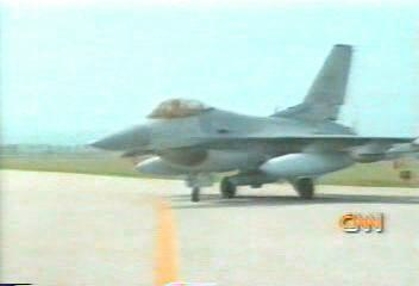 |
|
Click Image to Play Video [0:33]
|
The NATO war with Yugoslavia was an air war; an air war that began a year before the first bombs were dropped. It began with a warning shot across the bow -- delivered by WorldView. The threats -- the airplanes taking off, flying around in the neighborhood giving the Yugoslav radar something to show -- and the negotiations continued for a year.
Fighter-bombers are noisy. The persons who work close to them have to wear headphones to protect their ears from damage. But in these clips they are but a whisper. Neither Milosevic nor the broadcast audience could find fright in these sounds of the fighter-bombers. The message was delivered in words -- lest Milosevic or audience miss the import of what they were seeing. The reporters conveyed the verbal threats of the NATO voices.
War! In the end Milosevic thought he could stand down NATO, and the bombing began.
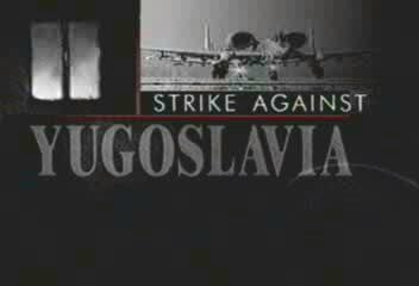 |
|
Click Image to Play Video [0:39]
|
The bombers roared off to deliver their damage.
The conflagration roared in response.
But viewers did not hear. The closest viewers got to sound was the music with which the broadcasts were initiated -- and the voices of the reporters.
30,000 feet is distant. The planes were specks even as they delivered death. This was war fought as remote. It was also war communicated as remote. There were no sounds; there were no faces. There was only interpretation.
Most often air wars were interpreted but were not heard. There was one exception. In December, 1998 England and the United States bombed Iraq just in time for the evening news, and CNN was there. On that first evening, which went on for several hours, the sounds of bombs and anti-aircraft firing were heard -- with introduction and conclusion surrounding 40 seconds of only unscripted talk.
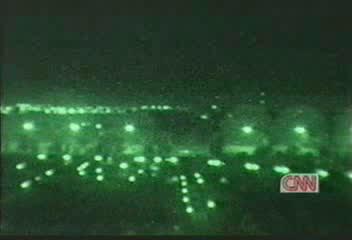 |
|
Click on Image to Play Video [1:09]
|
The sounds of air war.
Making Rubble
Russia ravaged Chechnya. Israel ravaged Palestine. They were not air wars. They were wars fought with artillery and tanks. They were wars to produce rubble.
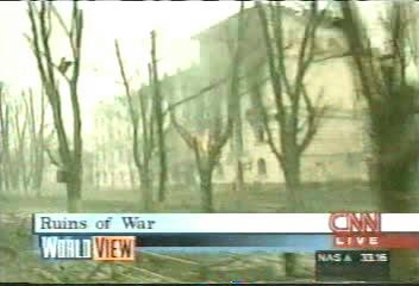 |
|
Click Image to Play Video [0:30]
|
Grozny -- the capital of Chechnya. Russians attacked. Rebels defended. It went on for four months. Then the battle was over. The streets were silent except for the low rumble of tanks and armored personnel carriers. The devastation was complete.
These are the pictures of a destroyed city, February 4, 2000. They destroyed it to save it, was the interpretation given to the reporter.
How it became rubble was the subject of many stories. On January 25, 2000 they did a review. Two narrators, two experts, many pictures -- artillery, tanks, personnel carriers used to reduce the city to rubble so the rebels could not hold out there -- and a sound from time to time.
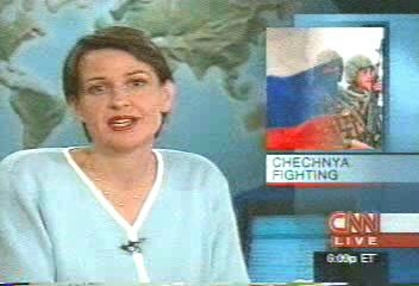 |
|
Click Image to Play Video [2:20]
|
In Palestine there were no sounds. Very early, April 3, one reporter made it through to Bethlehem when it was under attack, and it became clear what the story would be. After that reporters could not get through. The attack on Jenin, April 9, was watched from no closer than across the valley. After 8 days of attack in Jenin, rubble was everywhere.
 |
 |
|
Click on Images to Play Videos [0:54, 0:56]
|
|
This is a different silence than the earlier ones. It is the silence of embarrassment. If the silence is broken the outcry against the destruction will be louder and more critical. Better to keep everyone -- including aid agencies, U.N. fact finding teams and the global media -- out than to face a world askance at what you have done. Silence reduces the outcry. Silence reduces the embarrassment. If it cannot be heard we can all pretend it did not happen to human beings.
They make rubble. They make horror. They make suffering and anguish. How do you distance rubble? The anguish? Silence it.
On Foot
The weapon in vogue changes from one era to another: knights in shining armor mounted on their steeds in one age; airplanes at 30,000 feet dropping bombs that seek and find their targets in another. The constant of war, however, is the foot soldier.
In 1998 a tiny band of men who were to become called the Kosovo Liberation Army joined together to free themselves and their families from domination by serbs. No one knew who they were. So WorldView took the task of introducing them to the world.
This is a piece about a small, untrained, under-armed force taking on the Yugoslavian army. It features their battling. The common theme of Air War and Making Rubble is how the sounds of war were silenced. We take that one step farther with this video. The piece was 2 minutes and 20 seconds long. You will hear the sounds of war. The talk of the reporters will be silenced. We turn silence back on the media to notice how all prevasive is their talk. You will hear a lot of silence.
 |
|
Click Image to Play Video [2:23]
|
An occasional shout. An occasional shot. That is all you hear. Soldiers on foot are silenced, too.
The News Media and the Sounds of War
They are news programs. They are reporters. Their job is to describe and interpret. To do their job they must silence the sounds of war. War becomes intellectualized -- abstracted from the experiential base of sound. From time to time they have to warn viewers about graphic sights. To do their jobs there must be no graphic sounds.